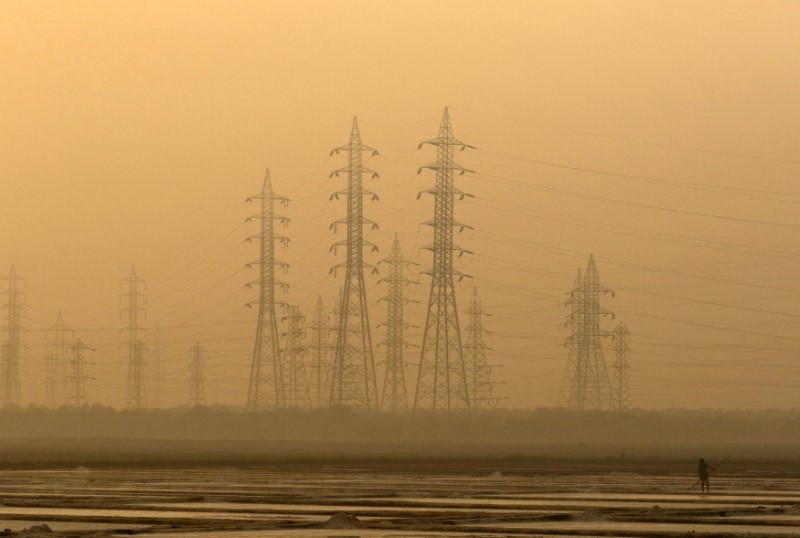By Sudarshan Varadhan and Neha Dasgupta
NEW DELHI (Reuters) - India's state-run power utility plans to invest $10 billion in new coal-fired power stations over the next five years despite the electricity regulator's assessment that thermal plants now under construction will be able to meet demand until 2027.
Graphic on India's power demand: http://tmsnrt.rs/2sBRwGl
In the first phase, India's biggest power producer, NTPC, plans to build three new plants with a combined capacity of more than 5 gigawatts (GW), nearly double the capacity of those currently being phased out, five senior company officials said.
The company has not made the investment public because it has not yet received government approval.
If approved, the plan could set back efforts by the world's third-largest greenhouse gas emitter to control carbon output and raise questions about Prime Minister Narendra Modi's vow to stand by commitments under the Paris climate accord.
The proposal also comes as several coal-fired stations built in the last power boom a decade ago are standing idle due to softer-than-expected demand. State-controlled Coal India is struggling to sell its stockpile as a result.
But other indicators indicate demand will pick up, a top NTPC executive said, asking not to be named because the plan had not yet been announced.
"I don't think (the current) electricity surplus will be there for a long time," he told Reuters. "We should not fool ourselves."
More than 300 million of India's 1.3 billion people are still not hooked up to the grid, according to NITI Aayog, which makes policy recommendations to the government.
As connections improve, the panel reckons, the country's per-capita power consumption could jump around a third to up to 2,924 kilowatt-hours by 2040 from 2012 levels.
In the next decade, the around 50 GW of capacity from thermal plants due to come online by 2022 will meet demand, the Central Electricity Authority (CEA) said. Additional supplies will come from sources such as solar and wind, it said.
Asked about NTPC's plan, CEA chairman RK Verma said the commercial decisions of the company were its own affair.
"NTPC is a commercial organization and they must be having their own commercial considerations," Verma said.
For its part, a spokesperson at NTPC would say only: "NTPC takes decisions after consulting both the CEA and the ministry of power."
THERMAL VS RENEWABLE
Solar power generation capacity in India has more than tripled in three years to more than 12 GW since Modi targeted raising energy generation from renewable sources to 175 GW by 2022, against total installed capacity at the end of May of 330.3 GW.
Around 78 percent of generated power in India at the moment still comes from coal-fired plants, however, making it one of the biggest users of the dirty and cheap fuel in the world.
Carbon dioxide emissions from India's thermal plants are expected to jump to 1,165 million tonnes by 2026/27 from 462 million tonnes in 2005, the CEA estimates. Emission intensity, measured in carbon dioxide emissions versus GDP, is likely to fall, however.
India is undergoing a programme to retrofit several coal-fired plants to reduce emissions.
The plants planned by NTPC are "supercritical", meaning they are 2-3 percent more efficient than conventional plants and therefore have lower emissions.
NTPC's proposal is likely to be greeted with alarm by environmental activists who are already worried by the CEA's statement that existing power plants are unlikely to meet India's emission norms before the Paris deadline of December this year.
"Adding more power plants would aggravate health impacts even further," said Sunil Dahiya, an energy activist with Greenpeace in New Delhi, when asked about the possibility of new coal-fired plants.
NTPC's proposal is to build plants of two 660 megawatt (MW) units each at Singrauli in central India's Madhya Pradesh and Talcher in Odisha in the east.
The biggest plant, with a capacity of 2.4 GW in the eastern state of Jharkhand, was close to getting clearance from the environment ministry, one of many steps in the process of getting government approval, one of the senior company officials said.

A plan announced by NTPC last year to generate 10 GW of energy from renewable sources by 2022 was making slow progress due to land acquisition issues, another company official said.